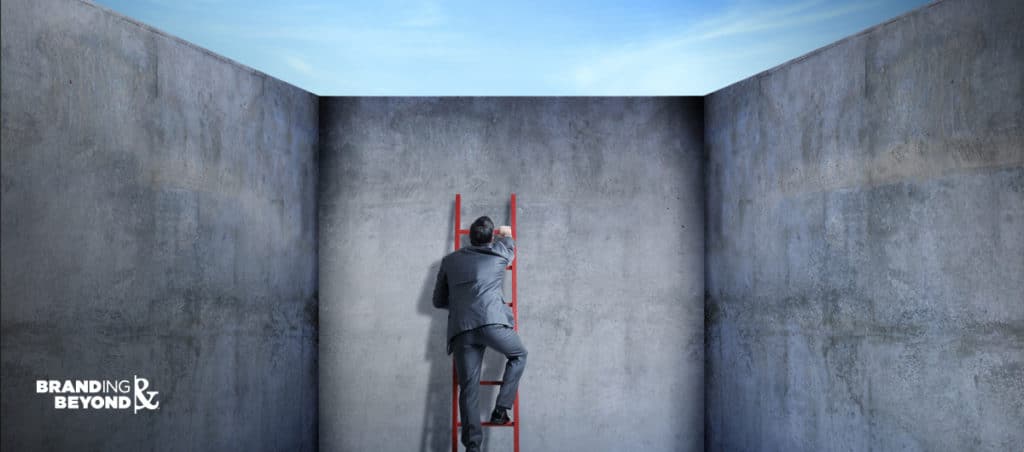
How to Stop Customers From Fixating on Price
‘Can you do it cheaper?’
‘The guy down the road is selling the same thing for $15 less…’
Sound familiar? Frustrating as hell, right?
You do kick-ass work. You shouldn’t have to justify an extra couple of bucks per hour.
So how do you stop people from asking?
Convey your worth before they even contact you – position yourself as something other than a commodity.
How to escape the accidental commodity trap
When you are seen as a commodity, people view you in the same way as every other company that sells the same products or services as you do.
Because of this, they’ll be swayed by one factor and one factor only – price.
You can cut prices to try to win their business, but the more you cut your prices, the more you damage your brand image – and your profit margins.
In case your company’s reputation and profits aren’t enough to persuade you not to compete on price, here are a few other things that suck about buyers looking for the cheapest price:
- They’re incredibly hard to engage with long term
- They have little-to-no brand loyalty
- They want quick and easy transactions
- They can be pretty demanding
So, how do you escape the accidental commodity trap?
What is brand differentiation & how can it help my business?
Differentiation is a branding strategy that uncovers your company’s uniqueness (it is there, trust us) and creates a visual and verbal brand personality you can apply to everything.
You are more than just a price.
You are more than your products and services.
Differentiation is the YOU ingredient that’s missing. Without it, you look like a commodity.
With brand differentiation, you’ll get respect as a company, which will mean people actively look to hire you because of the work you do, the things you stand for, and the service you provide.
And you’ll no longer be judged solely on price.
How to prevent your clients from getting hung up about the price of your service
1. Position your brand as an authority and an expert
If you want to avoid becoming a commodity:
- Think about your brand positioning.
- Think about your brand from the inside out and the outside in.
- Actively work on managing your brand.
You're never too big or too small to do this.
Shift the power in your buy-sell relationship with your customers by positioning your brand in the market as the leader you are.
Let’s take a look at a few examples of companies that have differentiated themselves and reaped the benefits:
T-Mobile attracts a young audience by offering less commitment and an easy-to-switch-providers promise – they’re one of the most successful companies in their niche as a result.
Lush (stay with me, fellas) brings natural, ethical beauty to the makeup industry as an authentic alternative to traditional products. The company is the unrivaled leader in the ethical cosmetic market.
Trader Joe’s sells unique (yet affordable) grocery items with a smile. They’re known as being the neighborhood grocery store you can trust – despite having hundreds of locations across the country.
I bet if you’re looking for one of their services, they’re probably the three companies you go to first. And they’re making a killing because of it.
2. Focus on the benefits of your service
By focusing on the benefits of what you sell, you’ll be able to convince prospects that they should work with you regardless of the price.
Don’t assume that just because your audience sees the features of what you’re offering that they'll understand the real benefits.
People buy products and services that make their lives easier. Things that solve their problems and takes something off their never-ending to-do list.
So, focus on how you make their world better – don’t just list bland features and expect them to hand over their cash.
3. Stay confident about your price
So you’ve chosen a price, now all you have to do is maintain it. To do this, you have to show confidence and stand firm when presenting your price.
When you’ve successfully positioned your brand, you’ll rarely hear, “your price is too high” or “you’re too expensive.”
If you do get a haggler (hey, it happens to the best of us), you can suggest lowering the price – but you'll be removing some of the components of your service to reflect the lower cost.
Sometimes companies itemize their prices to make this process easier.
Separating your prices or price partitioning can be a great way to increase your prospect’s perception of value and highlight the benefits of your product or service – when it's done correctly.
This approach basically breaks down what you’re offering and shows differentiation that might have gone completely unnoticed.
For example, let’s say you’re offering a remodeling contract. You could charge it as one single price without showing your customer the individual cost.
You could also break it down for your customer to show them what they're paying for, like a package deal.
The amount payable stays exactly the same, but this strategy can have an effect on how your client views your service.
In their research, Berini and Wathieu showed that price partitioning actually affected how the customer viewed the product or service.
Showing the cost as a set of smaller charges increased the chances that the customer would convert. The better they thought the package was, the more likely they were to buy it.
So, are you sick of competing on price?
Here at Branding and Beyond, we specialize in differentiating fantastic companies from their mediocre competitors. We help companies figure out how to show their audience why their brand is the best on the market.
If you want to stop your customers from fixating on price and escape the accidental commodity trap, our team can help you get paid what you’re worth.
You may also be interested in:
- Know when it’s time to tell a troublesome client good-bye
- Why are you invisible when you know you're a badass?
- What you need to know before attempting a rebrand
- Protecting Your Ass(ets) and Aligning Your Brand Before It's Too Late.
- What is a rebrand? When and why you should rebrand your company
- What is more important, branding or marketing?
- Is it a marketing problem or a business problem?
- Stop throwing good money away on random acts of marketing
- What is a branding mindset, and do you need one?
- Are you confusing prospects?
- The Power of Personal Branding in Construction
- What to Post on LinkedIn
- Minding the Gap – How not to lose prospects' attention
- Nobody cares about your baby (and 7 other branding truths)
- Has your company become an accidental commodity?
- The 7 Reasons Why People Leave Your Website
Tracy O’Shaughnessy Founder / Lead Brand Strategist of Branding & Beyond
Tracy and her team help firms in and around the B2B building trades look and sound credible online and off.
She has been in the industry since the early '90s and is tired of seeing fantastic firms struggle, blend in, and get bypassed by prospects who judge them solely on the outdated information found online.
Branding & Beyond's mission is to solve real business problems and build the brand foundation clients need to get noticed and hired.
You can find Tracy on Linkedin and here on this blog.
